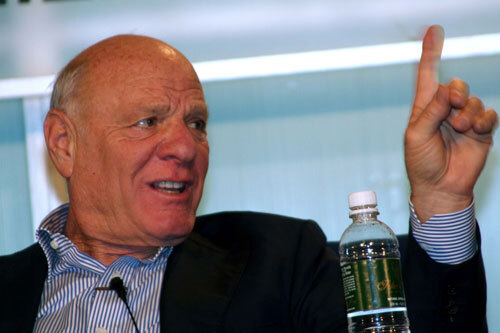
Star Trek: Phase II was intended to be the centerpiece of Paramount’s late-1970s network. It was never made.
How an all-star team of major executives nearly launched a major network as a vehicle for a Star Trek reboot … and how that network eventually inspired every successful “fourth network”
Doesn’t it seem like Barry Diller has been around basically forever?
Responsible for pioneering the movie-of-the-week concept while at ABC in the late 1960s, Diller became an iconic media mogul in the 1980s and 1990s before finishing out his long career with the internet giant IAC. (Which, fun fact, was initially built as a vehicle for increasing the reach of the Home Shopping Network.) But in the late 1970s, as head of Paramount Pictures, he took his first stab at becoming the founder of a fourth network. And he had many of the elements to pull it off at the time—only for it to get pulled down by internal politics.
The key factor for Paramount? Star Trek, which the company owned, was an absolutely massive hit in syndication, with 137 stations airing the show in the mid-1970s. There was clear interest in a new show, and Paramount leaned into that in an effort to build a new network.
The story of the Paramount Television Service, as it would have been called, feels comparable to the basketball “Dream Team” at the 1992 Summer Olympics, with soon-to-be major executives such as Diller, Michael Eisner, and Jeffrey Katzenberg all associated with the effort.
Paramount only planned a single night of programming, but the marquee show would have offered a great launching point for a fourth network: Star Trek: Phase II, a revival of the original series with Gene Roddenberry back as creator and most of the original cast back on board. With Star Trek already a phenomenon, the network would have essentially launched with a guaranteed hit on its hands.
But the effort failed to pick up steam internally, according to the Los Angeles Times, out of concern that the studio would lose tens of millions of dollars in trying to build a new network. Despite the strong interest in new Star Trek series, the channel was not to be, though the work on the unfinished Star Trek revival played directly into the film that appeared in 1979. (The film also had one thing that the series might not have had: Leonard Nimoy, who was in a battle with the studio over royalties at the time the revival series was being considered.)

Barry Diller. (Wikimedia Commons)
The effort was the just the first time Paramount tried to launch a fourth network. Diller—who carried a reputation in Hollywood so strong that The New York Times wrote he had “built what is widely regarded as perhaps the best-run, most stable and most consistently successful movie company in Hollywood”—also tried to create a Paramount network around 1984, running into issues with leadership at Paramount’s parent company, Gulf+Western, for a second time. That’s when he left and became the Chairman CEO of 20th Century Fox, where he found someone who was willing to pony up the cash to buy a group of stations—Rupert Murdoch, whose News Corp. acquired Fox in 1985.
“Mr. Diller—who became chairman of Paramount Pictures at the age of 31, ran the studio for a decade and built it into Hollywood’s most consistently successful movie studio before he lost a power struggle and moved across town to Fox in 1984, has the hubris to think he can create the first television network since Leonard Goldenson launched ABC in 1951,” a 1986 New York Times article on the launch of Fox, and Diller’s role in it, stated. (He had the hubris, alright—and it worked after a few tries.)
But the idea for a Paramount network didn’t die with Diller, just as the idea of a Star Trek TV revival never went away with the demise of the Paramount Television Service. In fact, the syndication success of Star Trek: The Next Generation revived interest in the idea—now technically a fifth network, thanks to Fox—around 1989, per the Times, though the feet-dragging at Gulf+Western prevented it once again.
Eventually, it came back with a vengeance in 1993, thanks to a collaboration between Paramount and Chris-Craft Industries’ United Television, which came to be known as the United Paramount Network, or UPN. Problem was, by that time, a fellow major studio, Warner Brothers, had basically the same idea. Both new channels were driven by changes in federal regulations that allowed TV networks to syndicate their own shows—something troubling to both Paramount and Warner Bros., as they each distributed many successful shows in syndication. The net effect was that UPN and The WB went on air at almost exactly the same time.
UPN was not exactly a major success—while it had the successful Star Trek: Voyager and WWE Smackdown was a longtime anchor, many of its other shows (for example, the one based on the work of annoying bad Twitter man) failed to make an impact, and the network merged with The WB in 2006 after eventual Paramount owner Viacom spun off UPN as a portion of the CBS corporation. That lives on today as the long-running “fifth network,” The CW.
In many ways, we eventually got a fourth network because of Barry Diller, who was willing to see this idea through, to bank his reputation on getting it right. Given his key role in this story, we’ll do him a solid and not dwell on the time he tried to turn the USA cable network into a “fourth network” by acquiring a group of Home Shopping Network affiliates.
Even our business heroes sometimes get it wrong.